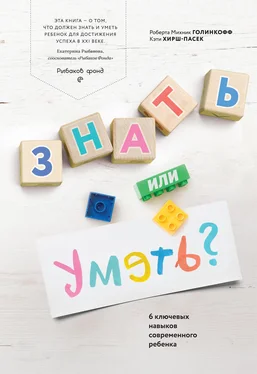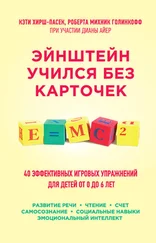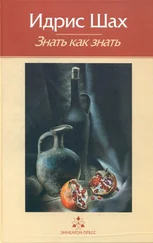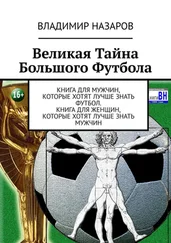Kaufman, J.C., & Beghetto, R.A. (2009). Beyond big and little: The four C model of creativity. Review of General Psychology, 13, 1–12. dx.doi.org/10.1037/a0013688.
Williams, S.D. (2008). Kid inventors: Brain children. См. здесь: www.afterschooltreats.com/wfdata/frame1216-1158/pressrel5.asp.
Iwashina, K., & Pellegrini, T. (Producers), & Gelb, D. (Director). (2011). Jiro Dreams of Sushi [Motion picture]. United States: Preferred Content, Sundial Pictures.
High Line Park. (n.d.). Взято с сайта New York Travel: www.newyorktravel.gr/index.php/en/new-york-attractions/new-york-parks/836-high-line-park, абзац 21.
Brown. T. (май 2008). Tales of creativity and play [Video file]. См. здесь: www.ted.com/talks/tim_brown_on_creativity_and_play?language=en.
Friends of the High Line. (30 мая 2008). High Line history: Narrated by Ethan Hawke [Video file]. См. здесь: www.youtube.com/watch?v=F1tVsezifw4&noredirect=1.
Chow, B. (1 августа 2011). IDEO: What’s it like to work at IDEO? [Web log message]. См. здесь: www.quora.com/IDEO/Whats-it-like-to-work-at-IDEO, абзац 2.
Elkhorne, J. (1 марта 1967). Edison — The fabulous drone. 73 Magazine. См. здесь: www.arimi.it/wp-content/73/03_March_1967.pdf, с. 52.
Yamada, K. (2014). What do you do with an idea? Seattle, WA: Compendium.
Hoicka, E., & Butcher, J. (2015). Parents produce explicit cues that help toddlers distinguish joking and pretending. Cognitive Science. Advance online publication. dx.doi.org/10.1111/cogs.12264.
Lifelong Kindergarten — «Пожизненный детский сад» (англ.).
Watters, A. (2015). Lego mindstorms: A history of educational robots. См. сайт Hack Education: hackeducation.com/2015/04/10/mindstorms.
Maker Faire — фестиваль науки и творчества, место для общения тех, кто любит создавать современные технологичные вещи своими руками. Проходит по всему миру; в 2016 году прошел в Москве (МИСиС).
Vaughan, N.D. (1995). My life of adventure. Mechanicsburg, PA: Stackpole Books.
Так Уэйн Гретцки ответил Бобу Маккензи, заявившему: «Ты много раз ударил по шайбе в этом году» (Hockey News, 16 января 1983).
Duckworth, A.L. (апрель 2013). The key to success? Grit [Video file]. См. здесь: www.ted.com/talks/angela_lee_duckworth_the_key_to_success_grit?language=en.
If at first you do’t succeed, try, try again — «Если поначалу ничего не выходит, пробуй снова и снова», чему в русском языке соответствует пословица «Терпенье и труд все перетрут».
William Edward Hickson. (n.d.). In Wikipedia. См. здесь: en.wikipedia.org/wiki/William_Edward_Hickson.
T is a lesson you should heed: Try, try, try again. If at first you don’t succeed, Try, try, try again — «П — вот урок, который нужно запомнить: пробуй, пробуй, пробуй снова. Если поначалу ничего не выходит, пробуй, пробуй, пробуй снова» (англ.).
Best, J. (2011). Everyone’s a winner: Life in our congratulatory culture. Berkeley and Los Angeles: University of California Press.
Черный диамант, двойной черный ромб (Double Black Diamond) — в классификации горнолыжных трасс США последняя ступень, чрезвычайно крутые склоны, труднейшие трассы, которые доступны только опытным лыжникам.
Prendergast, M. (1994). For God, country and Coca-Cola: The unauthorized history of the great American soft drink and the company that makes it. New York, NY: Basic Books.
Bjorklund, D. (2007). Why youth is not wasted on the young: Immaturity in human development. Maiden, MA: Blackwell.
Ruble, D. (1983). The development of social comparison processes and their role in achievement-related self-socialization. In E.T. Higgins, D.N. Ruble, & W.W. Hartup (Eds.), Social cognition and social development: A socio — cultural perspective (pp. 134–157). New York, NY: Cambridge University Press.
Lipko, A.R., Dunlosky, J., & Merriman, W.E. (2009). Persistent overconfidence despite practice: The role of task experience in preschoolers’ recall predictions. Journal of Experimental Child Psychology, 103, 152–166. dx.doi.org/10.1016/j.jecp.2008.10.002.
Plumert, J. (1995). Relations between children’s overestimation of their physical abilities and their accident proneness. Developmental Psychology, 31, 866–876. dx.doi.org/10.1037/0012–1649.31.5.866.
Rozenblit, L., & Keil, F. (2002). The misunderstood limits of folk science: An illusion of explanatory depth. Cognitive Science, 26, 521–562.
Thaler, R.H. (21 августа 2010). The overconfidence problem in forecasting. The New York Times. См. здесь: www.nytimes.com/2010/08/22/business/economy/22view.html?_r=0.
Kettering, C.F. (май 1937). Research and industry. Scientific American, 156, 285–288, с. 282.
Goethals, G.R., & Darley, J. (1977). Social comparison theory: An attributional approach. In J. Suls & R.L. Miller (Eds.), Social comparison processes: Theoretical and empirical perspectives (сс. 259–278). Washington, DC: Hemisphere.
Blanton, H., Buunk, B.P., Gibbons, F.X., & Kuyper, H. (1999). When better-than-others compare upward: Choice of comparison and comparative evaluation as independent predictors of academic performance. Journal of Personality and Social Psychology, 76, 420–430. dx.doi.org/10.1037/0022–3514.76.3.420.
Dweck, C. (2006). Mindset: The new psychology of success. New York, NY: Random House.
Steinberg, L. (2008). A social neuroscience perspective on adolescent risk-taking. Developmental Review, 28, 78–106. dx.doi.org/10.1016/j.dr.2007.08.002.
Steinberg, L. (2014). Age of opportunity. Boston, MA: Houghton Mifflin Harcourt.
Dweck, C. (2006). Mindset: The new psychology of success. New York, NY: Random House.
Berk, L.E. (2003). Child development (6th ed.). New York, NY: Pearson.
Brown, J.D., & Dutton, K.A. (1995). The thrill of victory, the complexity of defeat: Self-esteem and people’s emotional reactions to success and failure. Journal of Personality and Social Psychology, 68, 712–722. dx.doi.org/10.1037/0022–3514.68.4.712.
Читать дальше
Конец ознакомительного отрывка
Купить книгу












